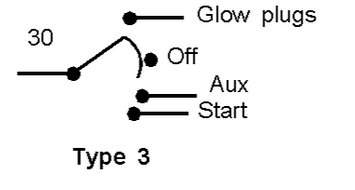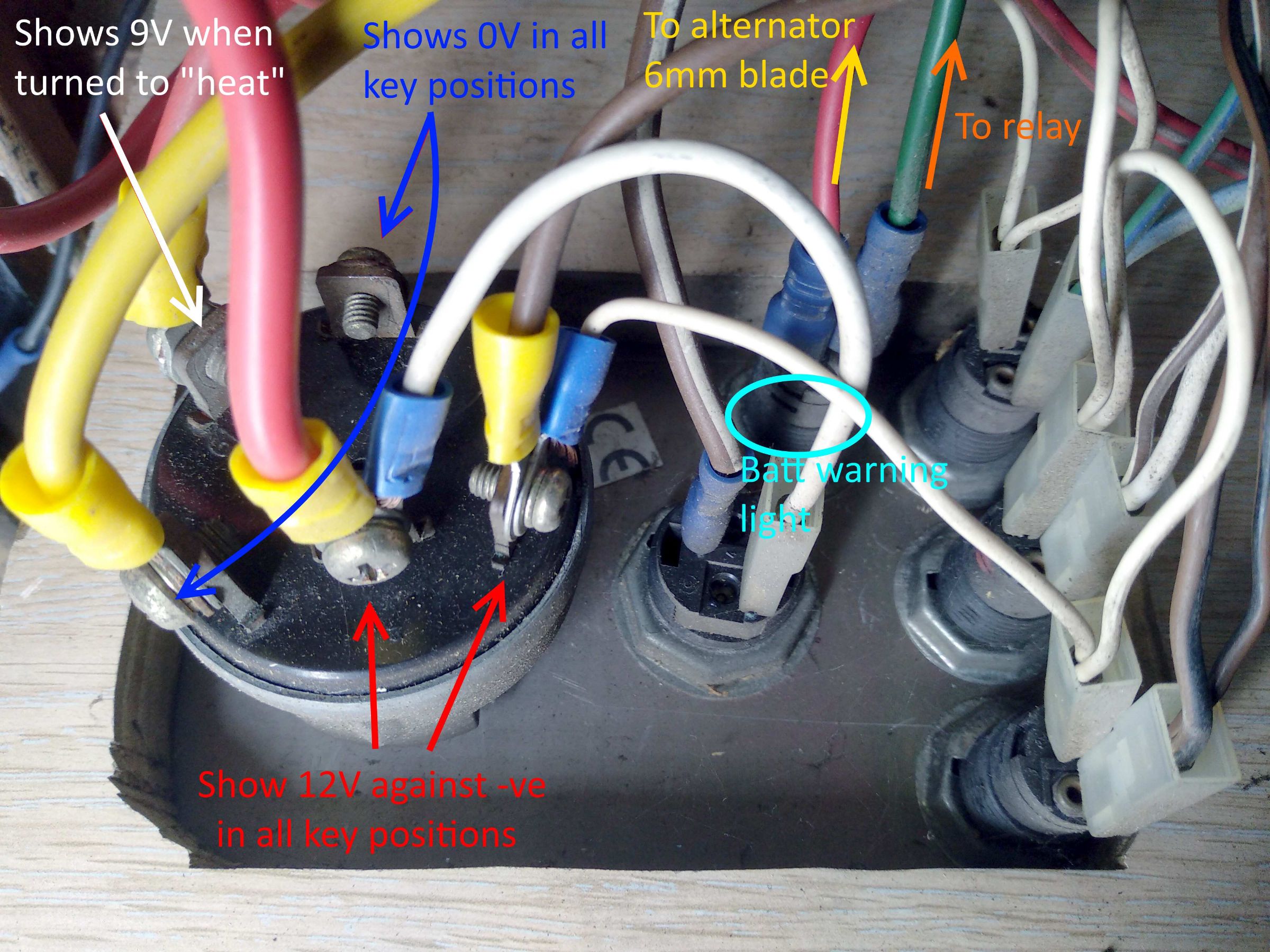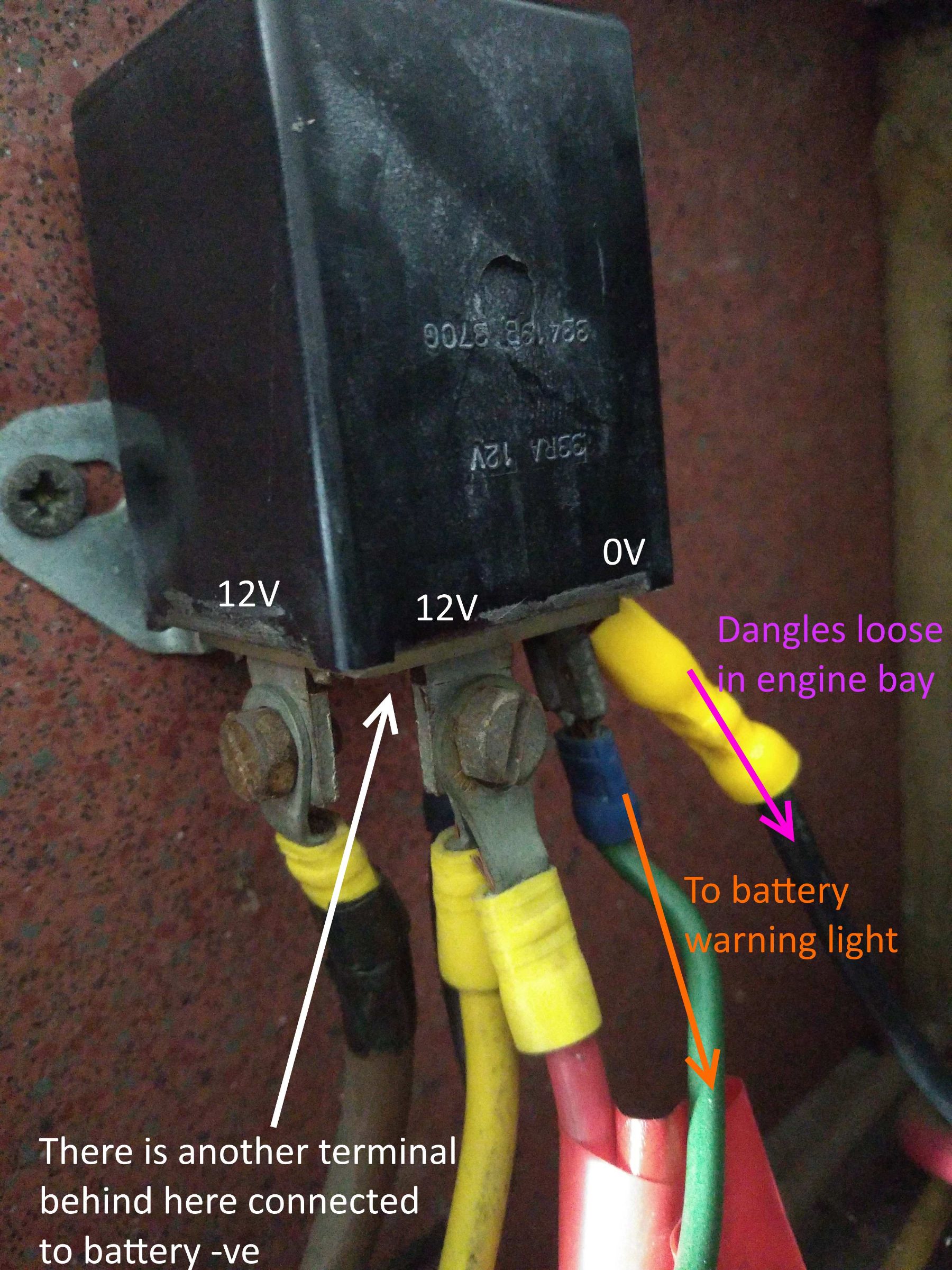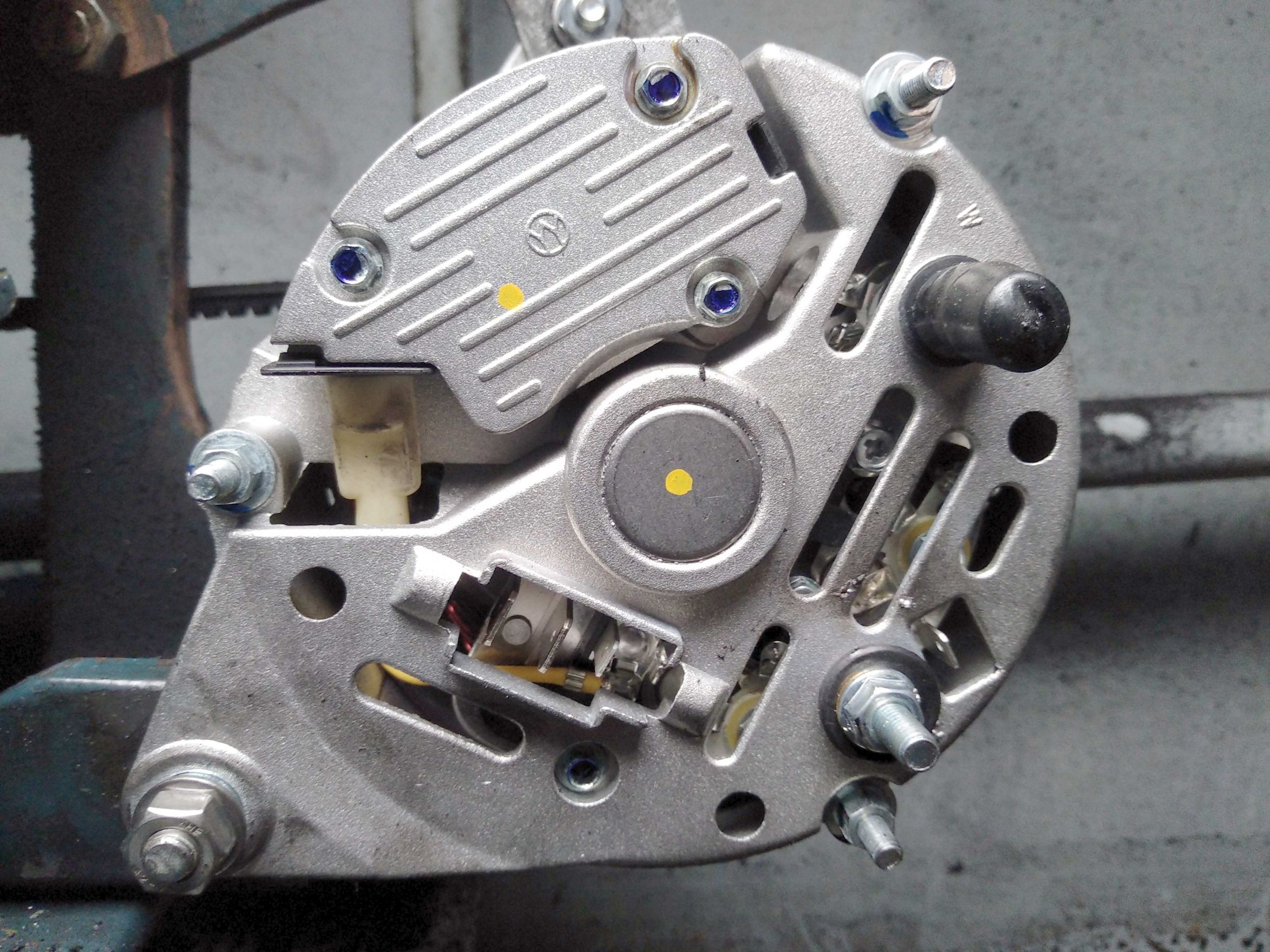-
Posts
1,179 -
Joined
-
Last visited
-
Days Won
1
Content Type
Profiles
Forums
Events
Gallery
Blogs
Store
Everything posted by jetzi
-

How to connect a central heating system with multiple heat sources
jetzi replied to jetzi's topic in Boat Equipment
Why does it matter which loop it's in? Either way it's taking the same amount of heat out? I also love the idea of free heat from the engine, especially because I run my engine so much more in winter. The install cost is not small though, I found a 0-7kW plate heat exchanger here for 150 GBP: https://www.stovesonline.co.uk/wood_burning_stoves/Plate-Heat-Exchangers.html To be honest I'm leaning towards not installing the back boiler, seems like too much of a risk. My main reason for it though is to spread the heat from the stove which is in a smallish room. But I also like having the redundancy of multiple ways to heat. -

How to connect a central heating system with multiple heat sources
jetzi replied to jetzi's topic in Boat Equipment
This sounds great! So I have two circuits connected by a heat exchanger, one with the engine and one cauli coil, and another that has the eber, stove, cauli, and rads all in parallel? -
I have three heat sources all in the stern of my boat: My keel cooled Beta 38 engine An eberspacher D4WSC hydronic rated at 4.3kW A 4.2kW Villager Puffin stove with a back boiler (something like this) These heat sources need to drive: A twin coil calorifier 3x or 4x radiators (which I still need to buy). At the moment only the engine is plumbed into the calorifier. The eber used to drive two rads which I removed due to leaking, the pipes are still in place but I need to add at least one more rad to them. My neighbour plumbed his engine circuit into his rads so the engine heats the boat which seems like a great idea! First prize would be if I could use all three sources for heating the boat but I read this topic and the Eber pump might be a problem, though it is on an open vented system. What's the best way to connect this system? I'm thinking of using 3x 1362W rads and 1x 401W towel rail which makes 4487W. I have heard it is better to drive the Eber hard and if I did connect the back boiler I think that it would do well to suck out more heat from my Puffin which is in a rather small room. Is this too much to expect my system to drive?
-
I feel like the benefits of a wireless communication BMS could largely be in simplifying the installation, so something that would actually help DIY narrowboaters more than automobile manufacturers. I imagine it would be quite nice to have all of the monitoring equipment and switches working wirelessly! Indeed when they said that I realised that the author probably didn't really understand what "wireless" meant. I also put a big question mark over whether wireless could ever be considered more reliable than wired! Wouldn't all that wireless transmission take a bit more energy than wired? As you say, the weight savings would be miniscule, so there wouldn't need to be much inefficiency to make it pointless. Wouldn't the car body count as most of the faraday cage? The article does say that it is designed for use with LiFePO4 (AKA LFP): "Both the ADI and TI wireless networks...support safe and sustainable zero-cobalt battery chemistries, such as lithium iron phosphate (LFP)." Balancing is just a case of taking some of the power out of a cell that's highly-charged and putting it into a cell that is less-highly-charged. Unless they are using tiny little high-power microwaves or something to transfer this energy wirelessly, this balancing would be done through (relatively thin) wires connecting the cells.
-
Thanks, will look for a Motor Factors. The ignition has been this way since I got the boat nearly 3 years ago, so I don't think there's any great urgency. And if it does pack up, I can always hotwire it! Yeah I realise that. There was nothing connected to it. But still thought that it should be live in the off position, which it is not. Was freezing today so I didn't get into the engine bay, but I expect that I'll have my 40A starter alternator either working or replaced soon. I'm hoping I'll be able to parallelise the two alternators to give me 115A.
-
Makes sense what you say about ignition switches. For this price there is no harm in trying a cheapie! Do you have any particular item or eBay seller that you have had good luck with? It also just occurred to me this morning that there may well be nothing wrong with my starter alternator - it might just be not exciting because of the ignition on not working! Will try connect it up to the toggle today and see what happens.
-
The DIN chart is where I got the labels from as I said in this post However since 17 is my start terminal (turned on with a sprung clockwise turn) I don't think 50 could be intended for the starter. 19 is glow and AC is aux so the only other terminal 50 could be is off. In any case, it doesn't matter since neither AC nor 50 can be turned on by the switch anymore.
-
Thanks, this matches what I determined exactly. 17 is the starter. Good to know thanks! I am a bit surprised though as the switch has to handle reasonably high current, so I'm surprised a 6£ switch would be chunky enough to take it?
-
Nothing at all. It's marked "50" which according to the DIN72552 chart is "Starter Control". I'm not sure what that means, but I believe it relates to the "Off" position since the "Glow", "Aux" and "Start" terminals are accounted for. It doesn't show any voltage at any key position (I tried all 4). Thanks Tony, I performed this test which is how I produced the image below. Glow (sprung anticlockwise) and start (sprung clockwise) turn on terminal 19 and 17 respectively. But when the key is in the other two positions (Off and Run) all 4 other terminals are off. I've wired up the exciter to a toggle switch and tested the process now. Turn on exciter - start engine - light goes off - turn off exciter. It isn't great but it will probably keep me going for awhile, particularly when you consider that it's 60 quid for a new ignition switch! (https://www.boatpartsandspares.co.uk/beta-marine-ignition-switch-528-p.asp) Otherwise I might get rid of the ignition altogether and just use push buttons.
-
Yeah doesn't look like I'll be able to take it apart easily and like Nick says the whole switch is probably on its last legs. I think what I'll do is wire up the exciter to a toggle switch for now and look at replacing the ignition key switch at a later stage. The numbers came from the switch and the labels from the DIN chart. My other 40A (starter) alternator is completely defunct, I have a replacement for that too, though, when I get around to it. Currently both starter and domestics are charged from the domestic alternator that I've been playing with today. Who knows what the original configuration was, but I expect it was a completely separate starter and domestic system each with its own alternator. I think this will do for now. Thanks for all your help.
-
My battery is getting low so I decided to "hack it" for now and just touch a wire to the positive to excite the alternator so that I can get it charging, which it now is. Success! I removed all the wires from my ignition terminals and tested each position in turn. Turns out that only 2 of the 4 positions work - start and glow. The one marked "50" (DIN72552 calls it "Starter control") I think is the "off" position which isn't needed for anything, but without an "Aux" position "on" I can't power the alternator excitation. Is it worthwhile trying to take the switch apart to try to repair the Aux position? Otherwise I could just replace it with a toggle switch. The glow definitely does do something, the engine won't start without it. But yes I'm sure the swich is as old as the boat so... 20 years old and probably not making a good contact. I think you are both right about the relay. I have a separate split charge relay mounted near the battery so this one isn't needed. I think I might just remove it totally to try to simplify the rats nest.
-
I think the relay might be a red herring. I'm going to disconnect all the wires from the ignition switch and see if I can figure out which terminal is which. Assuming it's in proper working order, I should be able to connect the other side of the battery warning light to the Aux. I'm following @Tony Brooks's guide to ignition switches, I have a Type 3 so I should be able to determine which of the 5 terminals go where. My hunch is that they aux and off have been connected together somewhere in the rats nest, meaning that there isn't any "ignition on" setting at the moment.
-
Thanks for all the help and explanations. I understand the need for current to power the magnetic field now, thanks @nicknorman, I was a bit confused why it needed the bulb but it makes sense that the bulb shows that the current is powering the field, and once the alternator is generating power the light goes out. I understand the need to connect the alternator field to the "ignition on". I took my ignition apart and I've taken some pictures. I measured the voltage of each terminal against battery negative. There are in fact two existing battery lights (presumably for my two alternators). The domestic battery light has two cables dangling in the engine bay near where the domestic alternator lives (marked in yellow and orange in the pictures). The battery warning light has a connection to a relay (shown in orange) and then directly on to the engine bay. I'm not sure the purpose of the relay? None of the warning bulbs currently do anything, but I've tested the battery warning light by directly connecting it to 12V and it does light up. My ignition doesn't appear to have an "on" state. There are three positives, but two of them are permanently on and one powers the glow plugs. So I'm not sure where to connect the other dangling wire (in pink), or if perhaps there is something wrong with my ignition.
-
Thanks Tony! Currently I don't have a warning light. So I should attach a lamp positive to the 6mm blade in the group of 3 (the one on the right in the picture) and lamp negative to the battery negative. Will that then allow the alternator to produce current? I will try that, do I need to be concerned about the resistance of the lamp I choose or will any resistor do?
-
I have such a mental block about alternator wiring, I have read the page on @Tony Brooks site about alternators but I am still struggling to understand! My current alternator has only one cable connected - a big stud for battery positive. My current alternator doesn't fit the bracket well and the pulleys are out of alignment. As a result it chews up belts quite regularly. I recently bought a spare (this one: https://www.ebay.co.uk/itm/LUCAS-A127-TYPE-ALTERNATOR-LEFT-HAND-LH-12V-75AMP/324193353273 ). I'm experimenting with installing this alternator, which fits the bracket much better. The intention is to then try to clean the rubber dust out of the old alternator and reposition the pulley while the new alternator keeps me going. But also I would like to have a working spare available in case my current alternator burns out! The new alternator has a B+ and a W stud. I don't have a tachyometer so there is nothing to connect to the W. I have connected the B+ to the battery positive but it shows no voltage with the engine running. The ad calls the alternator a "3 pin blade connector" alternator. I think that these connections must be for voltage sensing or for excitation, and without them the alternator can't start. I do notice there is another blade connector near the B+ stud (the stud in the bottom right of the photo). Can anyone please help me identify what I need to connect these blades to?
-
I buy Beta branded everything and religiously stick to service intervals. I feel like a sucker but it buys me the peace of mind that if something does go wrong, it wasn't because I wasn't following the instructions ?
-
How do we generate energy in a carbon-neutral manner is the important and harder question. How we get the energy to where we need to use it is the less important and easier question. "Generating" energy by digging high density fuel out of the ground is cheap, easy and also solves the easier question so it's been the default since the industrial revolution. Hydrogen is just a "battery" or store of energy. In other words, it's a possible answer to the second, easy question. It doesn't do anything to solve the hard question - and as people have mentioned above, since it's 3x less efficient than using the electricity directly, using hydrogen makes the hard question 3x harder.
-
Why not just use the natural gas? It bothers me that you would be pro carbon-generating fossil fuel in this case and against carbon-neutral biofuel. But I guess I'll have to get over it! I believe some kind of energy-dense liquid or gas fuel is going to be needed in the carbon-neutral medium term, for planes, off-grid machinery and maybe boating. First prize would be if this fuel could be made with electricity (like hydrogen) but relatively more efficient and safe. But I'd take another carbon neutral alternative if this isn't forthcoming.
-
I think the idea is to use the hydrogen as a battery - you store the energy in times of low demand and high production by converting the energy to hydrogen, then you convert the hydrogen to electricity in times of high demand and low production. There are other ideas for storing power, like pumping water to an upper reservoir at low demand and driving a hydroelectric generator at high demand. Another alternative is to just build enough of the renewable source to cover the peak demand, which might work out cheaper/easier. That's a pretty clever idea! Once electric cars have properly taken over, there's a network of batteries all over the country. What would they make the methanol out of? Assuming not fossil fuels.. which would make it a type of biofuel right? Sometimes you have to spend energy to make energy. Presumably it's still worth it.
-
There's a lot of general pessimism on the forum about whether the waterways are being maintained well enough to last that long. I'm young enough that I hope to still be alive in 2050, and I really hope that I'll still be boating.
-
You can get very powerful motors if you want to cruise on fast flowing rivers. There's a conversation about it going on over on this thread: Wouldn't be possible to justify replacing a working diesel engine with a generator/motor combo, but if my engine was to blow up or if I was to have a new build, it would be a no brainer for me.
-
Thanks for the explanation, this all makes total sense! The upshot is that a diesel engine is as efficient as a generator + motor combo (20%). However with electric you make savings everywhere else and can use solar. Since most people need electricity on their boat anyway, and I think most people have some amount of solar (it's just so cheap these days) it seems to make sense to be able to convert that power to propulsion when it makes sense. I know that @peterboat has separate drive and domestic banks. Seems to me that you'd get the most benefit out of having one large bank, though it would have to be 48V. Are there any particular reasons you'd want to keep them separate other than to maintain differing voltages? Sure it depends on the way you boat. If you are cruising 8 hours a day most days even in winter then you probably aren't a good candidate for an electric drive. But I would hazard a guess that I'm not unusual in that most of my engine running is for generating electricity rather than cruising. I work during the week so I can only really cruise on weekends. Indeed, I can't see myself justify doing it on my current boat. Unless maybe I have a catastrophic engine failure (here's hoping!). But if one day "my ship came in" and I could have a new build, an ICE wouldn't even be a consideration. I can't imagine the UK produces enough waste cooking oil even to power all the boats in the country surely?! I think using biofuel for all applications where converting to electric doesn't make sense could be a really appropriate step on the road to carbon neutrality. The "greenness spectrum" really is an unfortunate red herring though. I understand that how it's currently produced might not be ideal, but it's theoretically possible to grow properly carbon-neutral biofuel and the increase in active biomass while it's being grown is a good thing for the carbon levels of the atmosphere. Biofuel will always result in some local air pollution but if it is used only for niche activities like boating and heavy machinery then it could form a small part of a comprehensive renewable energy solution. I despair that people are so quick to demonise it - the choice we are making in the near future is between petroleum and biofuel rather than between wind and biofuel. Solar and wind also takes up a heck of a lot of room like biofuel growing, and there are plenty of less-than-green aspects to the production of the generation equipment, transmission and storage of electrical energy. Incredible quantities of energy can be transported and stored in a tank of biodiesel and it's possible for it to be carbon neutral. I wonder if this argument could be avoided with a process for generating synthetic hydrocarbons using energy from electricity - a kind of "synthetic biodiesel". That would combine the advantage of hydrogen as a fuel (it can be manufactured using electricity and water) with the backwards compatibility of biofuel in existing ICEs. We'd still end up with local air pollution but we'd avoid the less-than-green biofuel agricultural aspect. Wind/solar/nuclear power could then be used to produce diesel and our ICEs could become carbon neutral much faster than we could all convert to electric. Doesn't sound that far fetched?
-
Just dreaming right now, just wanting to figure out what it is that I'm dreaming of ?
-
Thank you Alan! Is there anything special about a "marine" generator rather than any plain old diesel generator?
-
Can anyone suggest a high-quality generator for built-in purposes? Or a brand/manufacturer I should look at? Efficiency is the most important factor, then quietness. It would be great if it was water cooled and could be hooked up to a calorifier. I think @peterboat has such a thing. Can't afford it by the way, this is just for dreaming purposes. Dream is to convert to electric drive and use this generator for charging up a 48V lithium battery.







